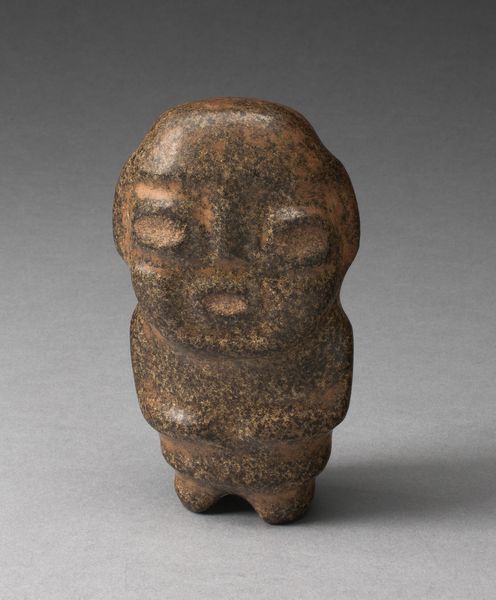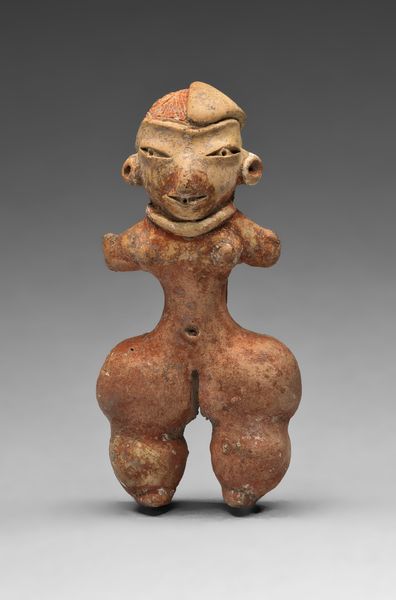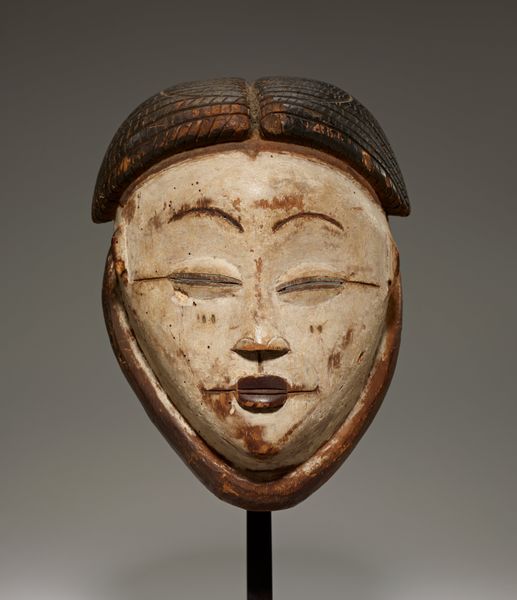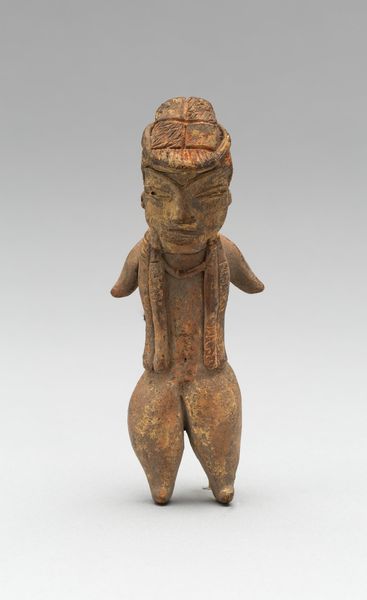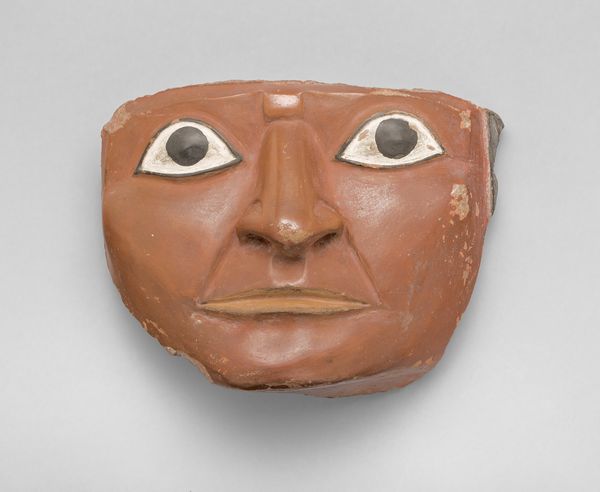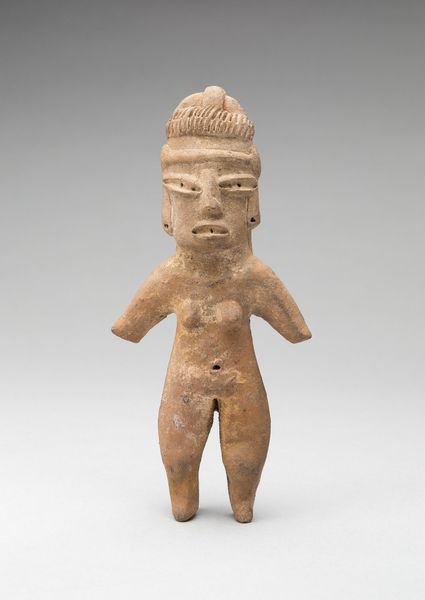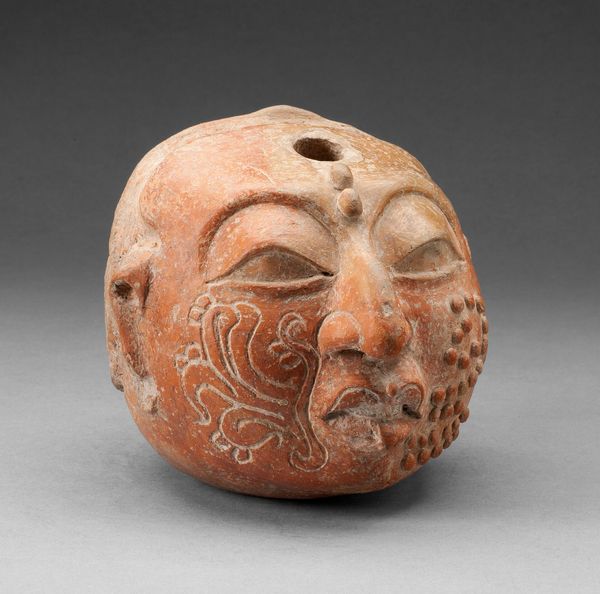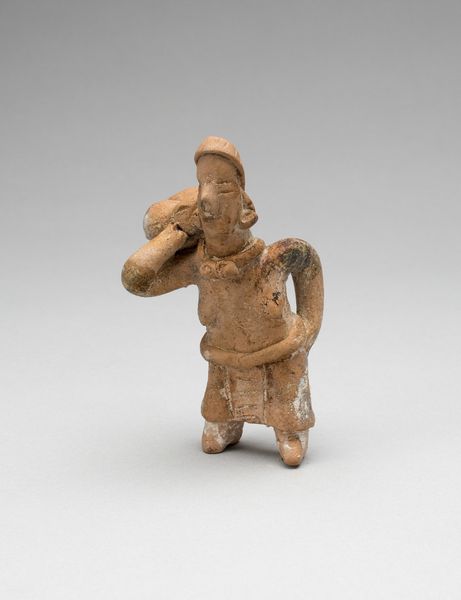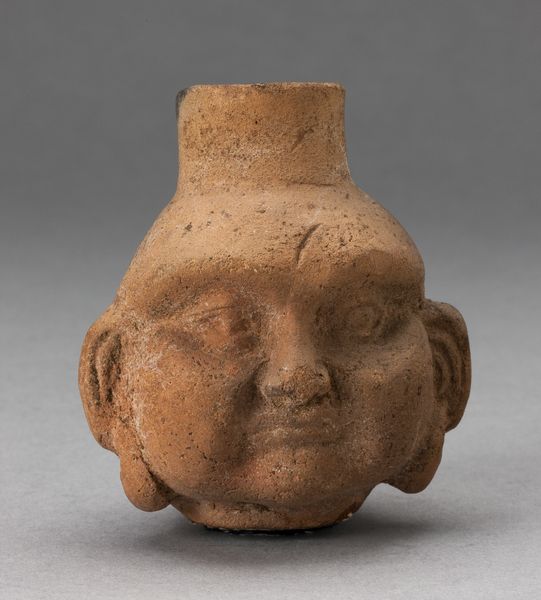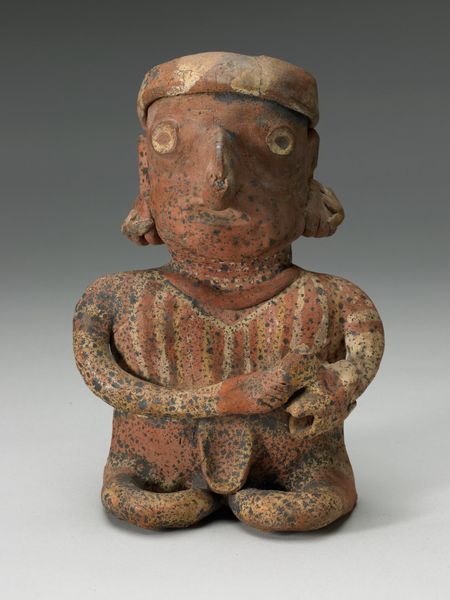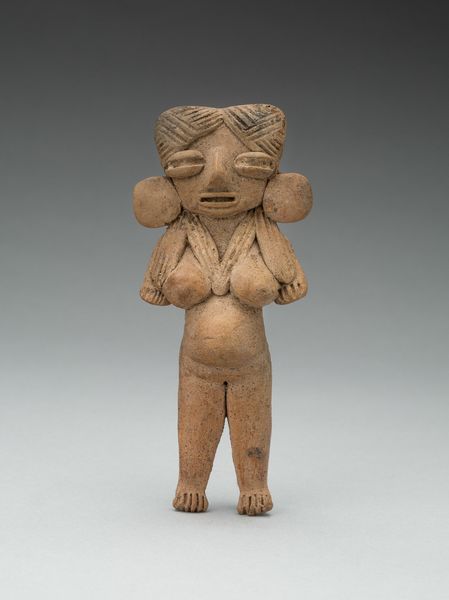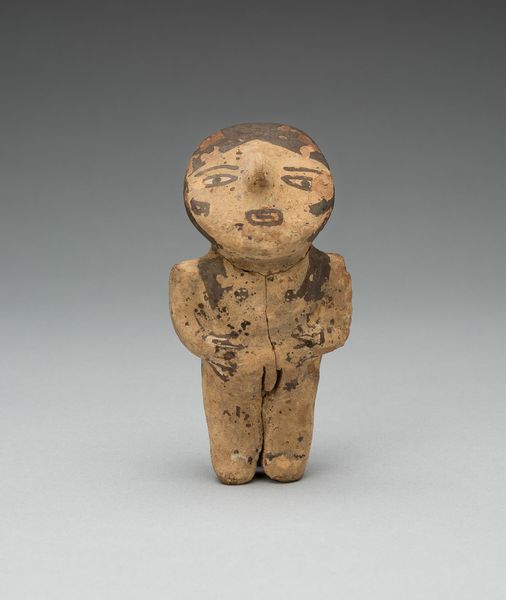
ceramic, sculpture, terracotta
#
portrait
#
ceramic
#
figuration
#
sculpture
#
terracotta
#
indigenous-americas
Copyright: Public Domain
Editor: This ceramic sculpture, simply titled "Head," was created by the Huastec people, likely sometime between 800 and 1400. The material has a kind of warmth to it, but the expression also feels slightly unsettling. What can you tell me about this work? Curator: Look at the clay itself. Its source would have been local, reflecting the geography of the Huasteca region. The labor invested in digging, preparing, and firing the clay tells a story of resources, tools, and social organization. Were specialists involved in ceramic production, or was it a household activity? That alone reveals details about labor structures of the time. Editor: So the process itself is important? Curator: Absolutely. Even the seemingly simple act of creating the holes for the eyes required careful planning and technique. Did they use specific tools? How was the heat regulated during firing to achieve this particular coloration and hardness? Also consider the use of ceramic itself. Why not stone or wood? Does the choice of material speak to specific rituals or beliefs? Editor: That's fascinating, I hadn’t considered the economic and societal implications embedded in the clay itself. What about its function? Was it part of a larger sculpture, or perhaps used in rituals? Curator: The clues are in the materiality and how it's made. Analyzing the context surrounding its discovery is vital. Was it found in a temple, a burial site, or a domestic space? This impacts our interpretation, revealing its social purpose and symbolic value. How the sculpture would have been traded and transported should also factor into our ideas of the maker's role within the broader community. Editor: I guess it really changes your perspective to think about it in terms of the artist's choices within their resources. Thanks for illuminating that. Curator: And for highlighting the importance of looking beyond aesthetics and to recognize the inherent value in the work through considering materials, context, and creation!
Comments
No comments
Be the first to comment and join the conversation on the ultimate creative platform.
